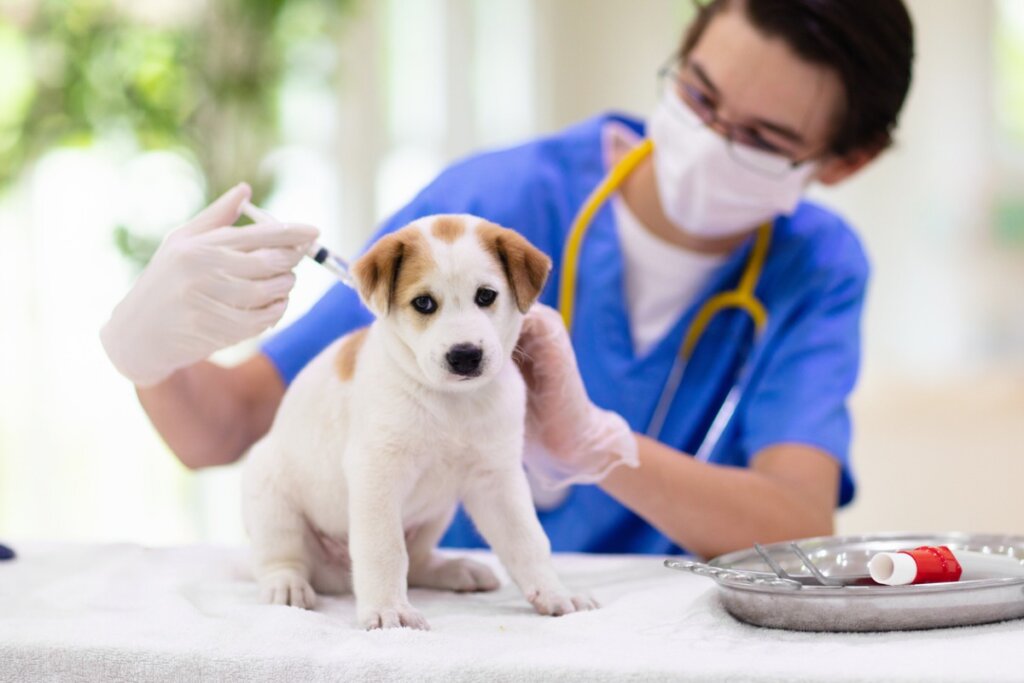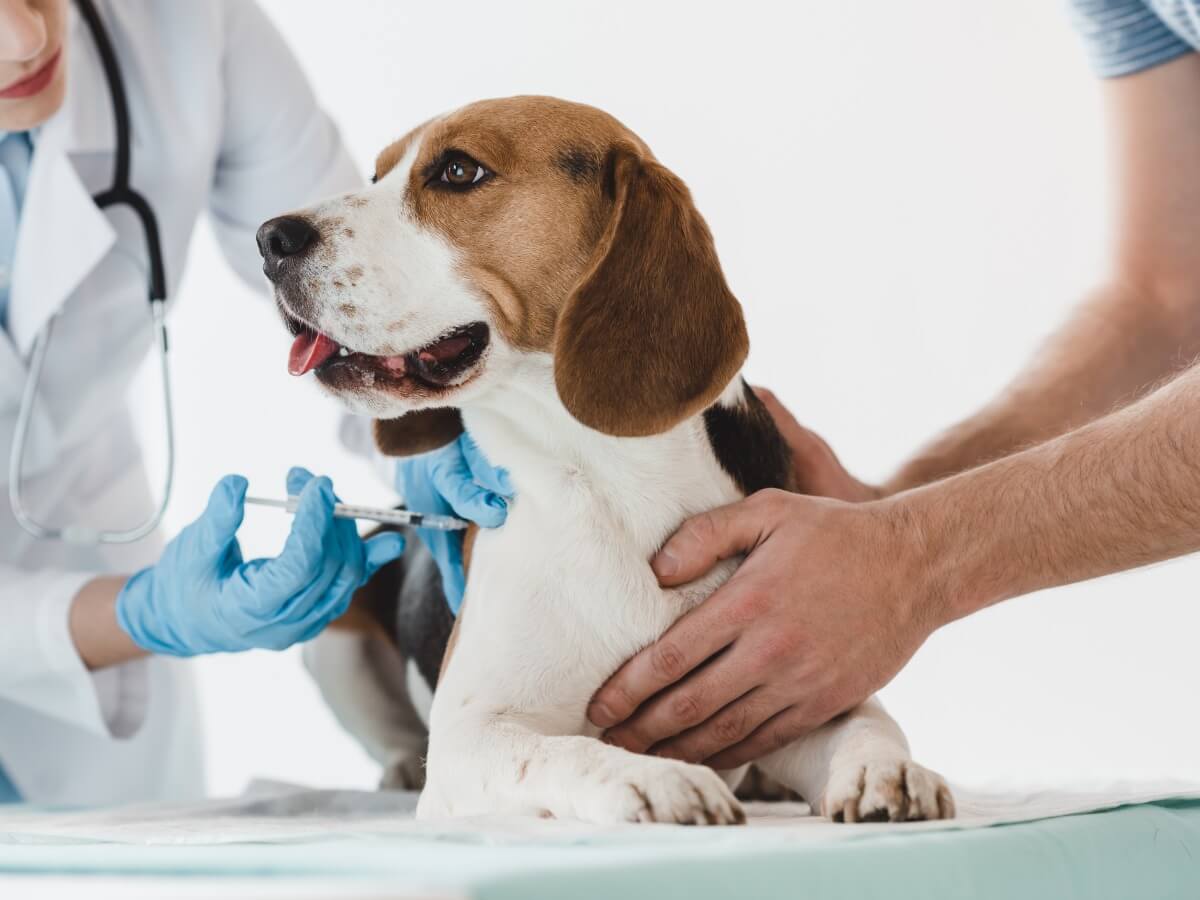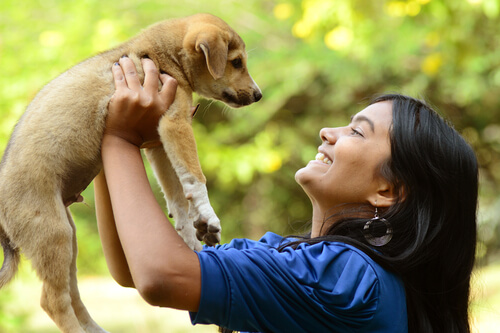How Long Does Parvovirus Last in a Dog?

Parvovirus is one of the most feared diseases by guardians, especially those caring for a puppy. Not surprisingly, it’s an acute and highly contagious disease. In addition, puppies are more likely to die from it, which makes it necessary to know how long it lasts, the severity, and the effects that parvovirus has on the dog’s body. So, how long does parvovirus last in a dog?
So, if you find yourself with this situation in your home, you may well wonder how long parvovirus lasts in a dog, because you’ll want to eliminate it as soon as possible. Here we’ll answer that question for you, contextualized, and with every detail you need. Don’t miss it.
What is parvovirus?
Parvovirus is a disease caused by viruses of the Parvoviridae family. This agent causes alterations in the intestinal villi, as it attacks the cells that are replicating. Puppies are affected from 6 weeks of life, when they begin to lose maternal antibodies.
Adult dogs can also be infected if they aren’t vaccinated, but the symptoms will be milder.
Parvovirosis is spread through contact with infected feces, either by contact or by oral-fecal route, i.e. the dog ingests the virus in some way. The symptoms are digestive in nature, with bloody diarrhea with a characteristic odor, anorexia, vomiting, fever, and dehydration.
There’s also one form of the disease that causes cardiac problems. Although not very common, it affects puppies more, causing myocardial problems and increasing the risk of sudden death.
Another interesting article: Dogs and Zika Virus: What are the Risks?
Treatment of parvovirus
There’s currently no treatment to eliminate the virus from the body. When a dog is infected with this disease, hospitalization is required to control the symptoms as best as possible. Among the most common measures are the following:
- Fluid therapy: Continuous diarrhea and vomiting produce great dehydration in the dog. Fluids are administered intravenously to keep this value stable.
- Antibiotics: To control opportunistic infections.
- Xylazine: In recent years, this drug is being added to the treatment, as it’s been seen to help reduce the duration of symptoms and improve the effectiveness of the treatment in general.
- Antiemetics: Medications to stop vomiting if the veterinarian considers that the dog could eat on its own.
- Parenteral feeding: In cases where the dog is unable to feed itself, intravenous nutrition will be necessary. Administering potassium is often a good way to aid recovery.
- Blood transfusions: Since diarrhea and vomiting are bloody in parvovirus, significant anemia occurs over time. Therefore, a transfusion may be necessary.
If your vet recommends that your dog stays at home, then it’s most likely because it has an attenuated form of the disease due to being vaccinated. Even so, it’s essential that you follow the veterinarian’s instructions to the letter and maintain strict hygiene in your home, as the virus can last for a long time on surfaces.

How long does parvovirus last in a dog?
Let’s get to the question at hand. Unfortunately, there’s no universal answer, but there are a number of factors that help predict this while the disease is taking its course:
- Incubation: The first symptoms don’t appear until days 5-15 after contact with the virus. At this time, the virus is beginning to replicate in the intestine.
- Duration of symptoms: For a surviving dog, symptoms last 5-7 days. However, it could be longer depending on the case.
- Elimination of the virus through feces: The dog is a vector of contagion from before the onset of symptoms and also after recovery. This interval ranges from 3 to 9 days after contact with the virus.
However, you shouldn’t rely on these figures. Even if the dog no longer shows symptoms and seems to have recovered, the virus is most likely still in the environment. Keep up the thorough cleaning and, if you can, renew feeders, textiles, and toys for your dog (or disinfect them thoroughly after each use).
The parvovirus can survive in the environment for 5 months to a year.
Is it good to vaccinate the dog if it has parvovirus?
Normally, dogs are vaccinated against parvovirus almost immediately after they lose their immunity from their mother’s milk. This means that it’s one of the first vaccinations they receive while they’re puppies, which is crucial to safeguard their health and life.
The vaccination process usually starts between 6 and 7 weeks of age, with revaccination at 8 and 19 weeks of age. After that, an annual schedule is maintained that protects the dog even when it becomes an adult.
Because it’s a frequently repeated process, it’s possible for dogs to contract parvovirus before their next vaccination. In these cases, dogs can’t be vaccinated, as this product is usually made with attenuated parvovirus virus. Because of this, it may cause the pet’s health to worsen.
You need to keep in mind that vaccines are only a preventive means and don’t have any functionality to treat the existing disease. This is the reason why so much emphasis is placed on vaccinating pets at the established ages, as only then do they have a full and beneficial effect.
You might be interested in: What’s the DHPP or 5-in-1 Vaccine for Dogs?
How dangerous is parvovirus?
As strange as it sounds, it’s very unlikely that a professional will be able to give an accurate prognosis after a pet contracts parvovirus. This is because each case is unique and both mild and lethal symptoms may occur.
Certain breeds such as the Rottweiler, Pit Bull, Doberman, German Shepherd and Springer Spaniel are known to be more prone to infection. But the cases vary greatly depending on age, size and whether they’re vaccinated or not. The best recommendation is that if you detect any symptoms that could be parvovirus, see your veterinarian immediately.
Can I adopt another dog if the one I have just got parvovirus?

This isn’t a good idea. Even if you get a rough idea of how long parvovirus lasts in a dog through the course of its illness, remember that the virus could still be in your home. It’s true that a vaccinated animal is unlikely to become infected, but it’s best not to take that risk.
Whatever the case, remember to keep your canines vaccinated and dewormed. Although the vaccine doesn’t protect them 100% from the disease, it ensures that the symptoms are very attenuated, and this can be the difference between life and death.
And, of course, at the slightest sign of parvovirus symptoms, go to the veterinarian without fail, because it’s an emergency. In addition, the pet hospital will have the necessary means to prevent the spread of the virus, and so you may be saving the life of more than one dog: yours and those who could have been infected.
All cited sources were thoroughly reviewed by our team to ensure their quality, reliability, currency, and validity. The bibliography of this article was considered reliable and of academic or scientific accuracy.
- Puentes, R., Eliopulos, N., Finger, P., Castro, C., Nunes, C., Furtado, A., … & Hübner, O. S. (2010). Detección viral en cachorros con diagnóstico presuntivo de Parvovirus canino (CPV). Veterinaria (Montevideo), 46(177-180), 47-49.
- Vargas Sarmiento, J. D. (2019). Xilacina como protocolo de tratamiento para reducir el tiempo de recuperación y porcentaje de mortalidad de la parvovirosis canina.
- Bejar Quisana, R. (2017). Evaluación del tratamiento de la Parvovirosis Canina con Inmunosuero y Fitoterapia.